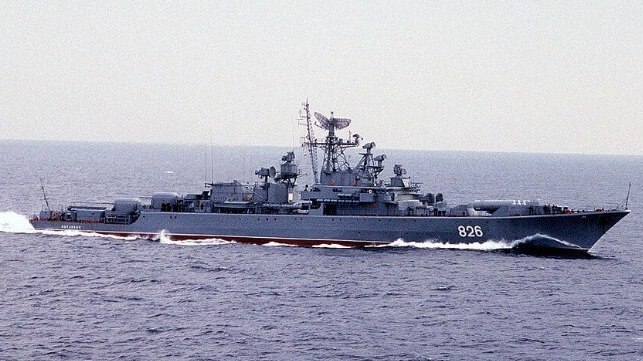At Risk From Ukrainian Attacks, Last Russian Patrol Ship Leaves Crimea

The last patrol ship of the Russian Black Sea Fleet remaining in Crimea has departed, according to a spokesman for the Ukrainian armed forces. If confirmed, it would suggest that Ukraine's concerted campaign to drive the Russian Navy out of the western half of the Black Sea has succeeded, and that the risk of Ukrainian drone and missile attacks in and around Crimea has become too high for Russia's surface fleet to accept.
The final holdout was a Project 1135 frigate / patrol ship, built for the Soviet Navy in the middle of the Cold War. Known to NATO as the Krivak-class, they were built in large numbers and fitted out for border patrol (under the KGB's operation) or for anti-submarine warfare (under the Soviet Navy). Of the 40 originally delivered, three are still in active Russian service, including one remaining example of the less heavily-armed KGB patrol-ship version - the Pytlivyy, which is assigned to the Black Sea Fleet.
"Given that they have not been able to patrol for a while, the movement vector . . . We can assume that this is a transition between bases," Ukrainian Navy spokesman Dmytro Pletenchuk told the Kyiv Independent. "[This] indicates the Russians' understanding that they must leave Crimea. At least [their] ships."

that matters most
Get the latest maritime news delivered to your inbox daily.
Ukraine lacks a navy, but its drone boat and missile attacks have damaged, sunk or destroyed roughly 30 percent of the Black Sea Fleet's commissioned ships since the start of the full-scale invasion in 2022. The list of targets includes the cruiser Moskva - the fleet flagship at the time - and the Kilo-class sub Rostov-on-Don along with multiple amphibs, corvettes and support ships.
The success of Ukraine's unconventional campaign has caught the attention of other forces around the world, from the U.S. Navy to Yemen's Houthi rebel group to China's PLA Navy. Its influence can be seen in Pacific Command's "hellscape" strategy for the defense of Taiwan, and (with much more publicity) in the ongoing Red Sea security crisis.
